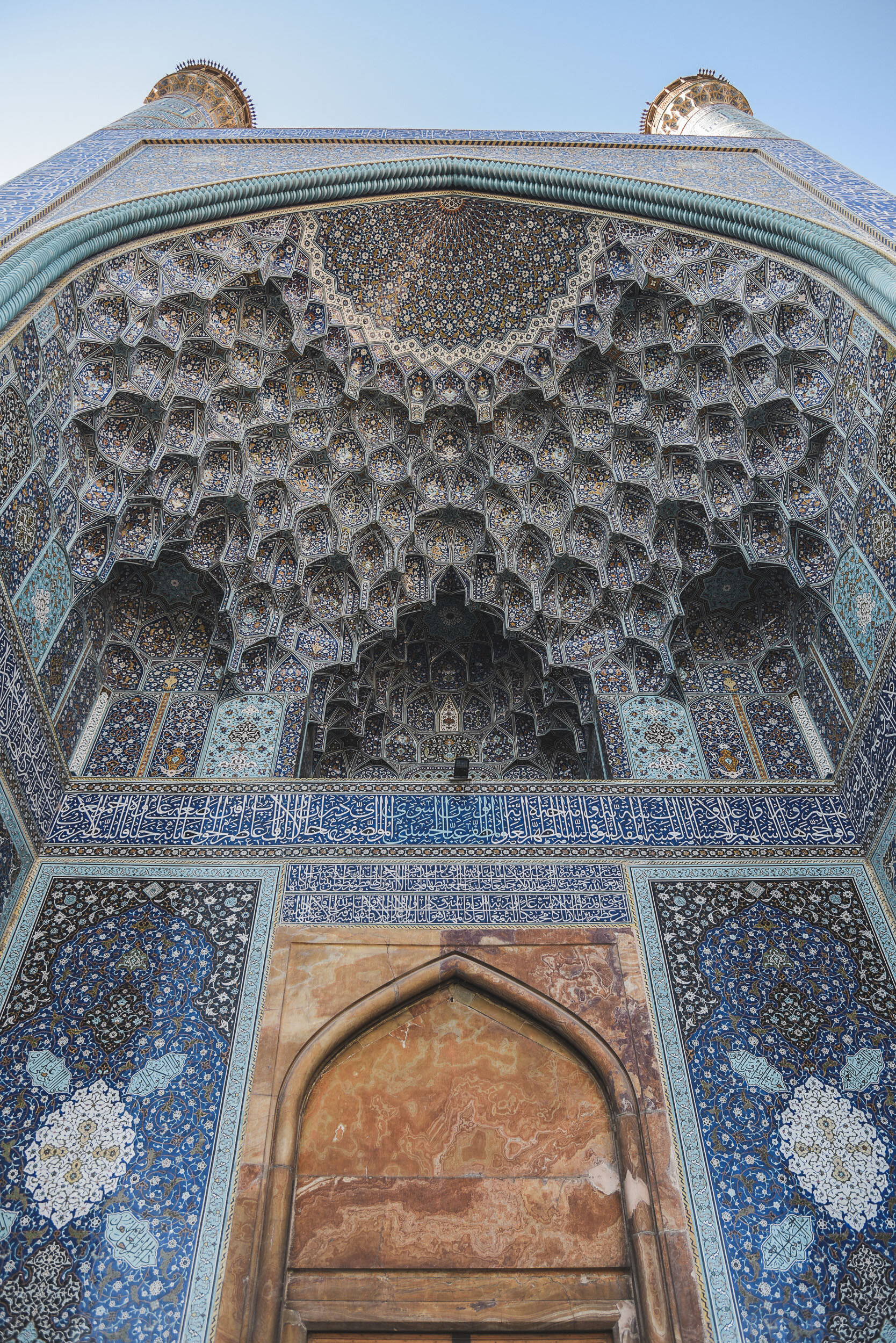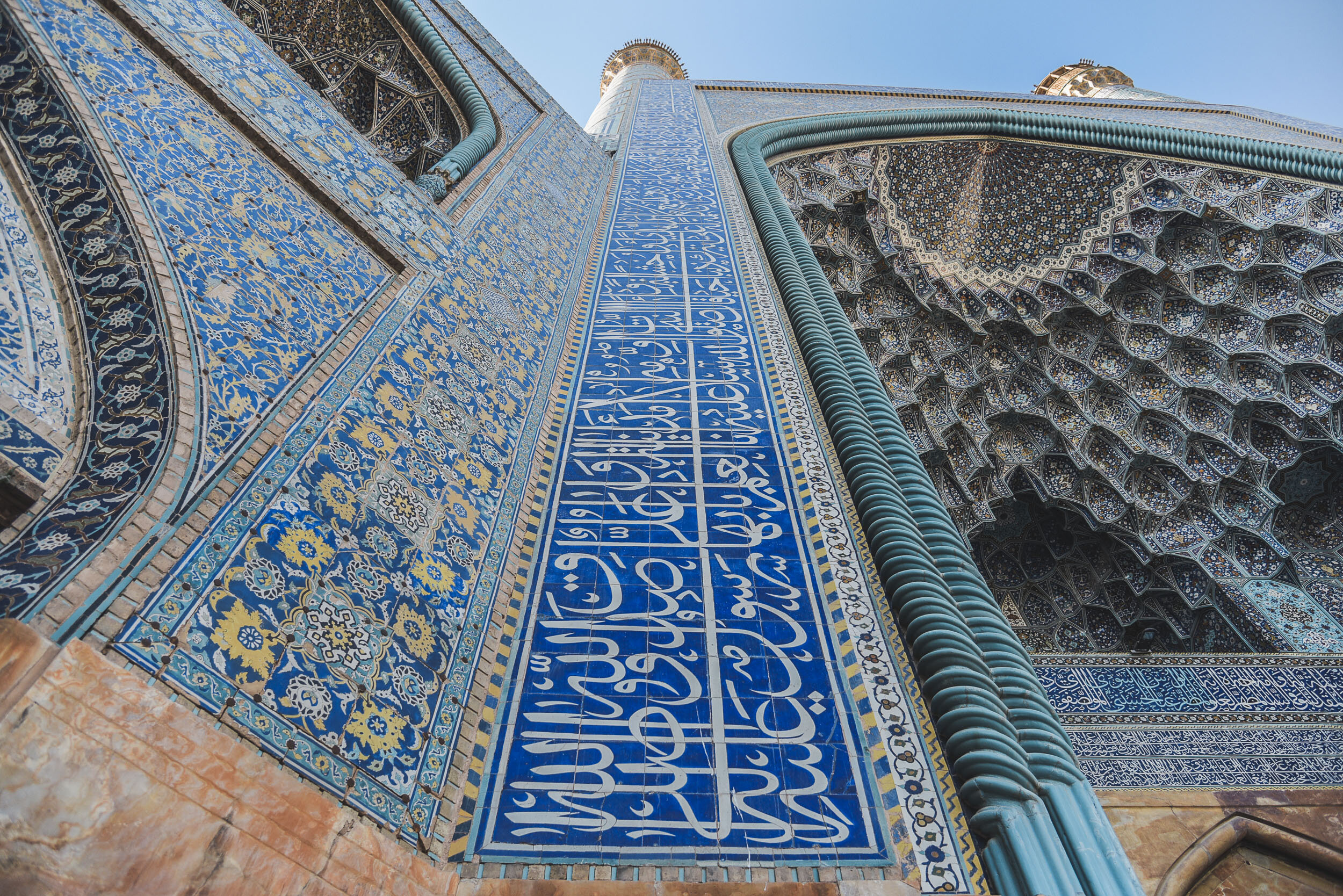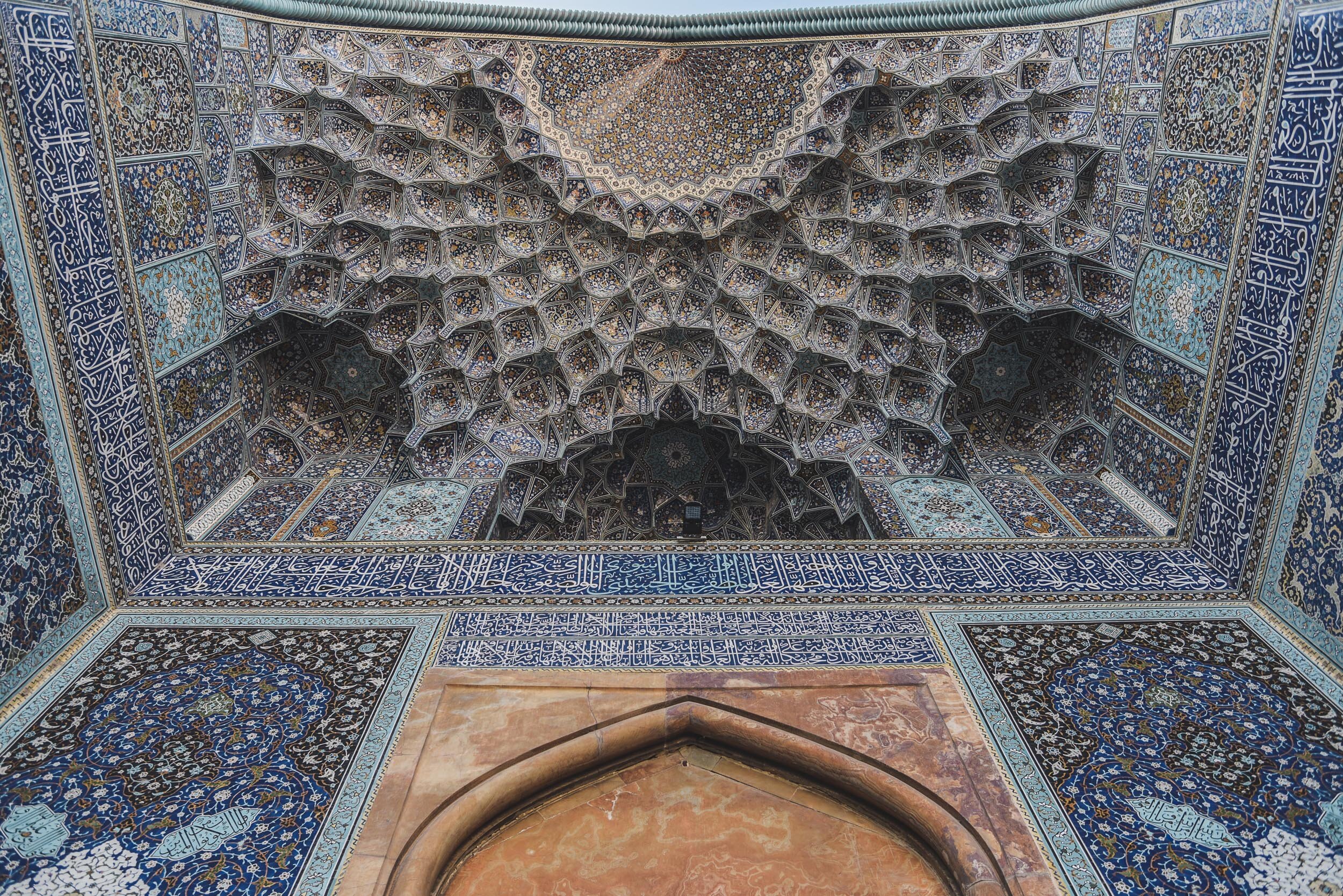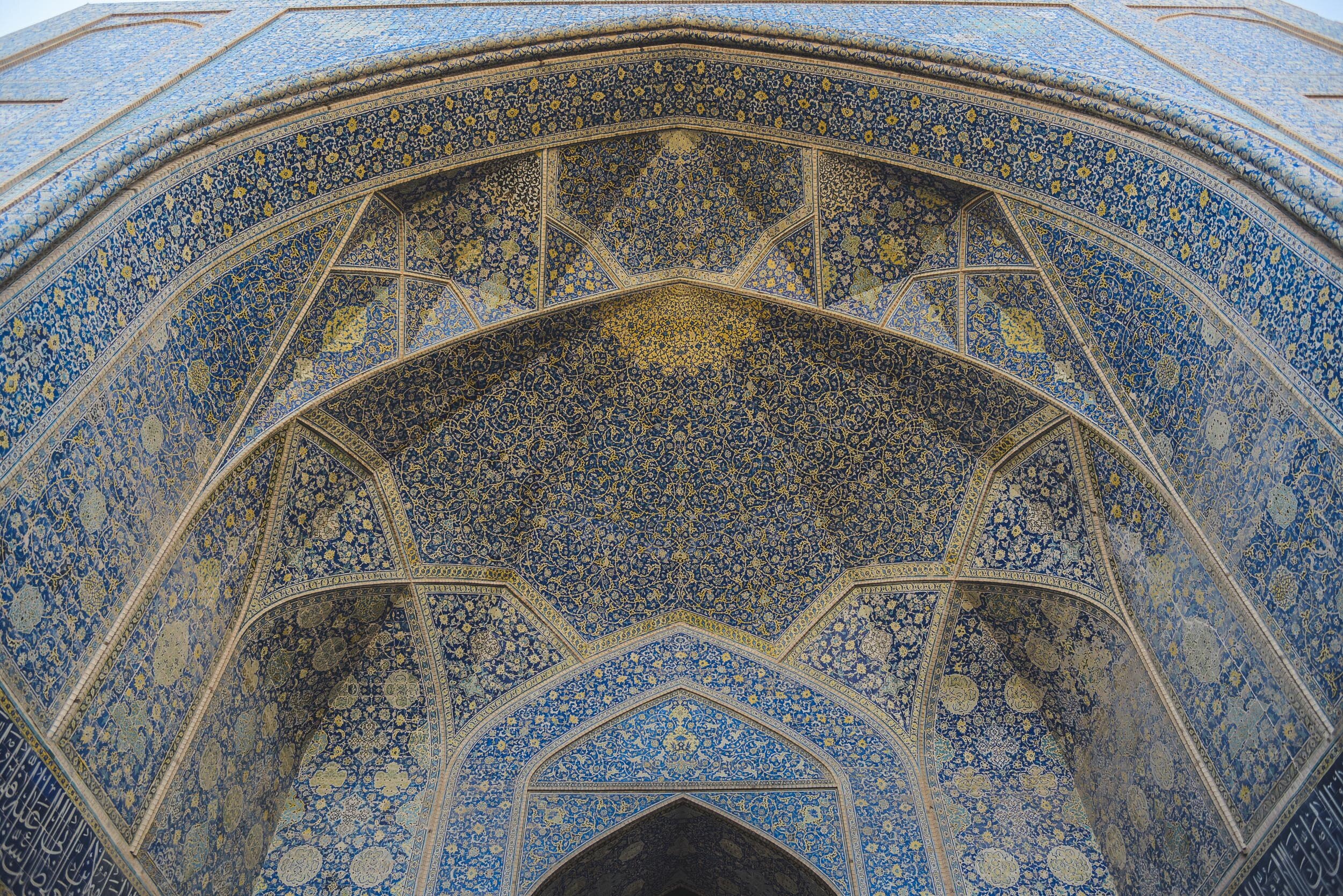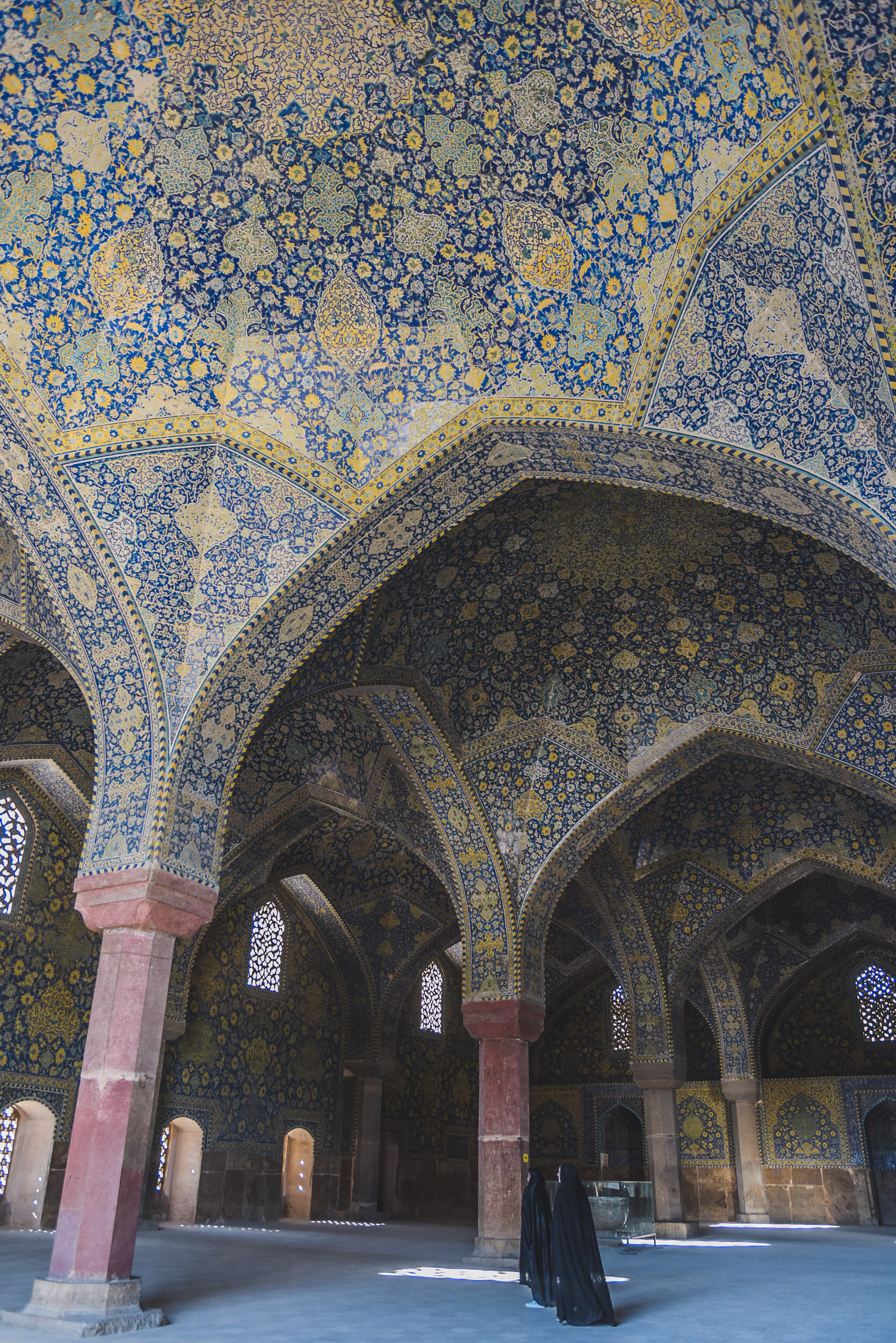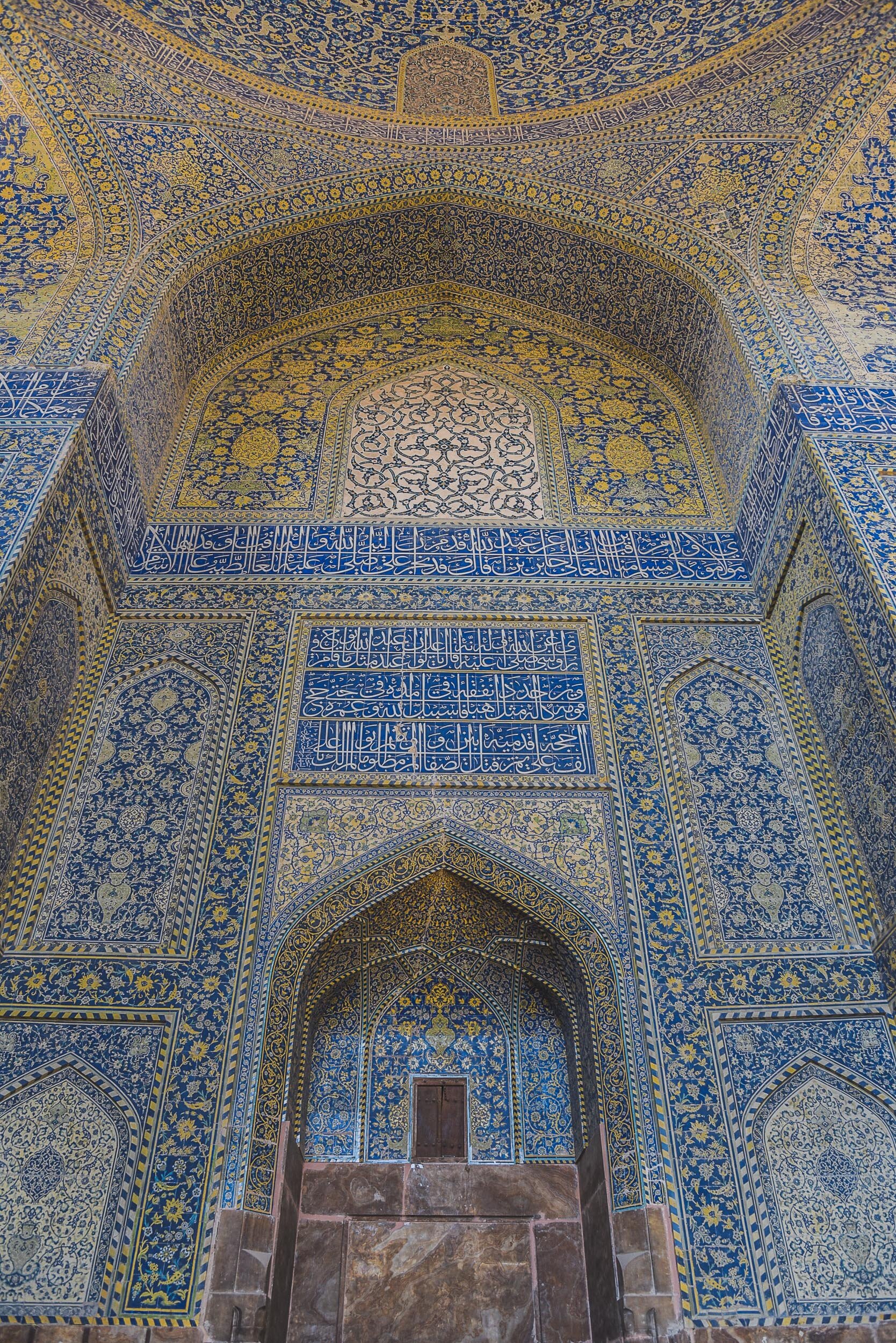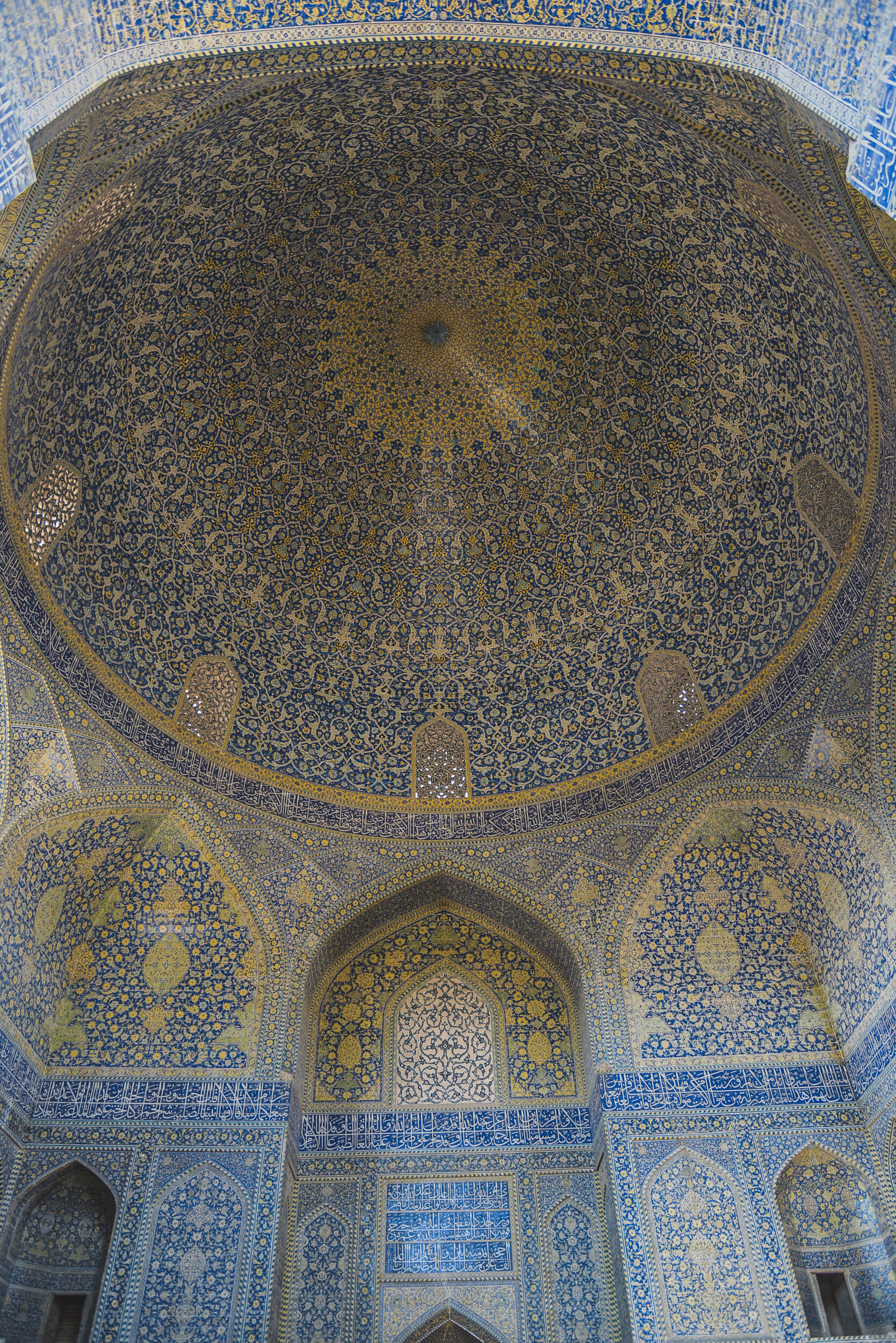I Lost My Heart In Esfahan
Esfahan is my favorite city in Iran. While walking on the streets of the city I caught myself thinking several times “I could totally live here”. I could imagine myself jogging along the river, enjoying a cup of chai with friends at the Naqsh-e Javan Square, finding peace in quiet contemplation in one of the many mesmerizing mosques in the city... I really mean it when I say that being in Esfahan feels like being in a dream. I stayed there for only a day and a half, which was way too short.
I want to be back in Esfahan, trying more local experiences and discovering more of the city. When I close my eyes and think about Esfahan I remember the lovely people I met there, the grandeur of the architecture, the markets where I wanted to photograph everything and a warm wave of happiness pours over my heart.
Entrance to the Abbasi Mosque, a UNESCO heritage site and symbol of Esfahan.
The Numbers
I love how numbers tell stories of their own by there mere existence. Here are my favorite facts about Esfahan.
+2 million is the population of Esfahan, making it the 3rd largest city in Iran.
89,600 square meters is the area of Naqsh-e Jahan Square, one of the largest squares in the world and a UNESCO world heritage site.
1050 - 1722 is the year span when Esfahan flourished, particularly in the 16th century under the Safavid dynasty. During this time it was the capital of Persia.
10,000–12,000 is the number of Christian Armenians estimated to be living in Esfahan. There are 5 Churches in the city.
162 mosques, 273 public baths, 1,802 caravansaries, and 48 madrasahs (religious colleges) were present in Esfahan between 1664 and 1677, according to the notes of French jeweler and writer, Jean Chardin.
There are more than 6,000 historical sites in Esfahan at present - a treasure of a city!
Sources: Wikipedia, Encyclopedia Britannica and Iran Gazette.
Understand
Esfahan is written as Isfahan on Google Maps and other Western websites. However, all labels on Iranian highways and Iranian maps spell it as Esfahan. That’s the spelling I’m using here, because it’s the native one. These are the same cities.
〜
There was a time when Esfahan was the capital of Iran and the biggest city in the world. This is no longer the case, but the phrase “Esfahan is half of the world” has remained alive to this day. I’d say Esfahan is a world of its own. And one that you must experience during your visit to Iran.
〜
My friend Aghil told me a funny thing about what people from different Iranian cities call each other. Teheranis call Esfahanis stingy people and Esfahanis call Shirazi people lazy. I found this quite funny because no matter where you go in the world, at the end of the day, people are people, and we’ll always make jokes about each other.
〜
I’m not sure if this is a fact or not, but I felt that Esfahan is the richest city of Iran. There are lots of people owning businesses in the arts at the main market or in specialty foods restaurants. In general, what I perceived from talking with several people in the city was a spirit of entrepreneurship in the air. Funny enough, despite the sanctions, in Esfahan you can buy Persian carpets with MasterCard and Visa 😉
Painting at the entrance of Naghshe Jahan Restaurant in Esfahan.
See & Do
If, like me, you stay for a short time in Esfahan, the best place to be in is Keryas Hotel. This will save you a lot of precious time as the hotel is right behind the Naqsh-e Javan Square, in the heart of the city. A huge part of the main places of interest are within walking distance from each other.
Here’s a list of what I managed to see for 1 day and a half in Esfahan:
Naqsh-e Javan Square • Abbasi Mosque • Lotfollah Mosque • Esfahan Market • Jameh Mosque • Vank Cathedral • Marnan historical Bridge • Si O Se Pol Bridge • Khaju Bridge
Other notable places I couldn’t visit in the city include:
Mollabashi House • Imam Ali Square • Ali Qapu Palace • Moshir Almolk Historical House • Chehel Sotoon Palace • Qazi Persian Bath (take a bath at a real Persian bath house)
In Esfahan, I simply gave up finding words to describe the beauty around me. I joked with my friends from there, telling them that living in Esfahan means secretly thinking every other city in the world is kinda ugly. They laughed and also kinda agreed 😅
While visiting the Abbasi Mosque and Sheikh Lotfollah Mosque (both UNESCO Heritage Sites), be ready for an overdose of all the shades of turquoise blue. This azure blue color symbolizes Heaven. These mosques are quite possibly two of the most beautiful mosques in the entire world. While being there, look closely at the details and you will notice that even though the patterns seem perfectly symmetrical, the artists have made an intentional small mistake in the architecture. That’s because they believe only God can be perfect. I’m sure it will be hard for you to point out these tiny imperfections. You will be speechless when you see the allure of these two mosques. The pictures I publish here do not do full justice to their timeless beauty.
Abbasi Mosque
Sheikh Lotfollah Mosque
Jameh Mosque of Esfahan
Another mosque you should really visit, and, one of my favorites in all Iran, is the Jameh Mosque of Esfahan. It’s one of the oldest mosques in the city, continuously built, rebuilt and renovated since the 8th Century BCE. The combination of the classic clay colored tiles and the deep blue mosaics make it stand out with its design. Its spacious inner yard feels like a sanctuary of peace and quietness among the bustling market.
The Esfahan Market
Let’s switch completely the subject and talk shopping. I usually don’t like shopping much, but the Esfahani market is a game changer. It’s 6 km long (you read this correctly) and the abundance of choice will leave you feeling poor, no matter your budget. The real richness, in my opinion, is not in those who can afford buying all the goodies from the market, but in those who can create a work of art out of raw materials. And when it comes to the arts, Iran is very very hard to surpass. Some of the signature Iranian works of art you can buy at the market include:
Carpets. Legendary, rich and famous, Persian carpets hold true to their fame. Equally famous are the merchants who will invite you for tea, sweet talk you for long time until you realize you left a fortune in their shop and are coming back home with 2-3 Persian carpets which will ship to you internationally, regardless of the sanctions. Legend has it that a Persian carpet never loses its colors, so it’s an investment of a lifetime.
Silver works. If someone had told me that I’ll see a giant silver Pegasus horse with a price tag of a few thousands EUR in Iran, I’d laugh at them... yet photo evidence suggests that such sights are real in Esfahan. Yup, it’s one of these things that you need to see to believe. It’s crazy how many shops at the market are dedicated to silver works. If you check them out, make sure to also see the workshops of the artists and observe the creative process itself.
Minakari. This is where my money flew away… One of the distinguished arts of Esfahan, I couldn’t resist these hypnotizing blue enameled metal plates. Each of them is hand made and takes dozens of hours to complete. You can find minakari in red, green, even in brown colors, but for me, blue is the original color and the best choice. Because they are made from metal, you can’t break them on the airplane on the way back which is a great advantage if you choose them as a gift.
Firoozeh-Koobi. These handicrafts of inlaid turquoise stone on copper can be anything from a piece of jewelry, to a table dish. Mainly, people buy small table dishes with a cover and put candies in them. Because turquoise stone is a semi-precious stone, the price tag can go up quickly even for not so big items.
Iranian Sweets. Guys... there’s only one word I need to say here: sohan. I challenge you to resist and eat ONLY one piece of this divine candy... It’s made of honey, saffron, cardamom, almonds and pistachios. And there’s nothing, absolutely nothing more delicious in Iran 😋😅 My favorite sohan is the “Ashkan Sohan” from shop No 180 at Naqsh-e Javan Square. Death of sweet bliss is guaranteed with this one.
Of course, at the market, you can also find jewelry, paintings, calligraphy art, ceramics, clothes, headscarves, tableware, tea sets, home decoration, hand made chessboards... the sky is the limit in Esfahan.
It’s important to mention that Esfahan is home to a Christian Armenian community. You can visit the Vank Cathedral and the Armenian museum just on the opposite side of the river. The cathedral, which is actually an Orthodox church, is a unique melting point between Iran’s mosques architecture and the classic Orthodox art painted inside. You will see the walls of the church tiled with the familiar flowers pattern from mosques and just above them, colorful depicted scenes from The Bible. Magic!
The Armenian quarter in itself is hip. Western style cafés, trendy clothes and shoes stores, even a fully equipped gym are all within walking distance from the Vank Cathedral. By complete chance, I saw one of the body builders going out of the gym and well… he looked just like Dwayne Johnson, “The Rock”. Not something you’d expect to see in Iran, but hey, this is Esfahan, so anything is possible!
To finish the day, you should spend time and relax at the bridges over the river. There are 3 bridges you need to see: Marnan historical Bridge, Si O Se Pol Bridge (double-deck stone bridge, featuring 33 arches) and Khaju Bridge. If you only want to see one bridge, Khaju Bridge is THE place to be at sunset. Sit down, have a tea, let the water whisper its secrets and get lost in a good conversation as the children play and giggle around you.
Eh, Esfahan, you infinite beauty! I left my heart somewhere in the Zayandeh River… I dream to be back there one day, feeling already eternally grateful to have seen, as they say, half of the world.
Copyright © Alex Kovacheva, Nomad Photos. All rights reserved.

